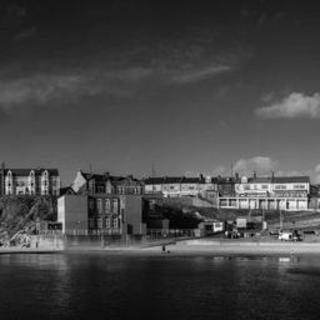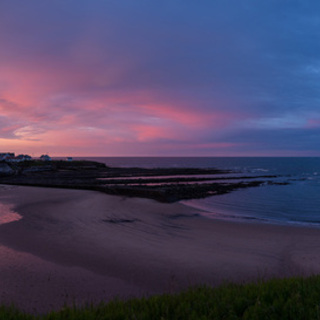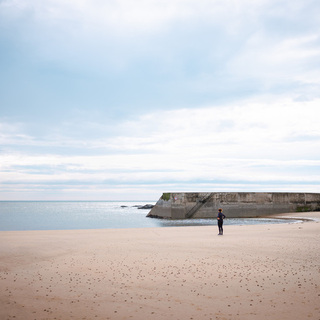Photography
Watching the tide, Cullercoats

There’s a famous quote in computer science from Phil Karlton: “There are only two hard things in Computer Science: cache invalidation and naming things.”
The naming part, I find, transfers just as well to naming photographs.
I always admire photographers with such a clear sense of their work and its meaning that they’re able to come up with good names for each photograph they share or publish. Rachael Talibart titles waves as gods and mythological creatures while Simon Baxter occasionally references Tolkien or describes anthropomorphised interactions between trees.
Meanwhile I struggle to do better than describe the location a photograph was taken.
Partly that’s just a difference in my approach to photography: I spend less time making each image and have rarely worked on a thematic set of images. My photography is a bit more basic, even after 20+ years: I just photograph scenes that catch my eye for the most part.
Even so, today’s photograph did feel like it had at least a little bit of a story to tell, and so it got a title: Watching the tide.
Many attempts at processing
This is another of those photographs that took me a long time to figure out how to process to my own satisfaction (whether anyone else likes it is another matter entirely).
Sometimes that’s a good sign I didn’t get the composition or exposure right in the field; sometimes it’s that I need to slow down and pre-visualise the end product I’m expecting or really think through the effect I’m trying to create.
Sometimes it’s other things.
With this image, there was certainly a mix of the first two: composition was hard because you can’t just climb over the fence atop the cliff to get a better view, and while I had done a certain amount of pre-visualisation when taking the photograph—I had shot a number of frames to stitch together later in post—I for some reason then spent quite a while trying to make it work with only one of those frames.

My first attempt at this image, with a narrower frame.
FUJIFILM GFX 50R, 40mm, 1/680s at ƒ/1.0
From memory, I was trying (too hard) to highlight the small tree in the foreground and so I ended up with a strong vignette and lightening the tree itself to really emphasise and draw attention to the tree.
It never quite felt like I’d got what I’d intended though so I kept leaving the file, occasionally coming back and trying again or just having another look and not bothering.
Eventually I ran the photo merge on the broader set of frames in Lightroom and instantly felt the squarer composition, with more room to breath either side of the tree, was a much better starting point.
This time I didn’t need to go so crazy with the dodge-and-burn or vignetting—indeed the final version has no added vignette or local adjustments, just simple tonal adjustments to exposure, highs and lows to improve contrast and visibility.

Allowing space to show the cliff to the right and the curve up of the cliff edge to the left helps frame the tree in a far more natural way than the vignette was managing.
The tree is now nicely framed to both sides as well as below by the grass and above by the harbour wall. The relatively calm water then allows focus to draw onto the barren, spindly branches of the tree in silhouette.
I like as well that the shape of the tree matches the shapes around it: the right side reaches higher, mimicking the cliff to that side reaching away, while the left side dips toward the other branches to the left on the cliff edge, again reinforcing the movement of the eye up through the image.
In the end, I at least got what I was trying to get out of this image: a lone tree watching out over the bay as the tide reaches its high point and obscures the beach; the harbour wall just keeping its head above water. And that’s good enough for me.




